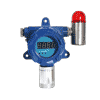
Gas Type by Combustible & Flammable Gases
What is Combustible Gas?
Combustible gas refers to any gas that has the potential to ignite and burn when exposed to an ignition source, such as an open flame, spark, or heat. These gases are characterized by their ability to undergo combustion, a chemical reaction that releases energy in the form of heat and often light. Combustible gases are commonly used as fuels in various applications, including heating, power generation, transportation, and industrial processes.
The flammability of a gas depends on several factors, including its chemical composition, concentration in the air, and the presence of oxygen or other oxidizing agents. When the conditions are right, a combustible gas can form a flammable mixture with air, and if ignited, it can lead to a fire or explosion.
Safety precautions are essential when working with combustible gases to minimize the risk of accidents. This may include proper storage, handling, and transportation procedures, as well as the use of safety equipment like gas detectors, flame arrestors, and explosion-proof devices.
Common examples of combustible gases include Methane (natural gas), Propane, Butane, Hydrogen, Ethylene, Acetylene, and various hydrocarbons. These gases play a crucial role in energy production, industry, and daily life but must be managed safely to prevent accidents and hazards.
Types of Combustible and Flammable Gases
Combustible gases encompass a wide range of gases that have the potential to ignite and burn when exposed to an ignition source, such as an open flame, spark, or heat. These gases are used as fuels for various industrial, residential, and transportation applications. Here are some common types of combustible gases:
C2H2
Acetylene
C2H4
Ethylene
H2
Hydrogen
HCN
Hydrogen Cyanide
CH4
Methane
PH3
Phosphine
Notes
- Ammonia (NH3): Included despite higher LEL due to flammability under specific conditions.
- Hydrogen Cyanide (HCN): Highly toxic but also flammable.
Gas Detectors for Combustible Gases Detection
Combustible gas leak detectors are essential safety devices designed to monitor and detect the presence of various combustible gases, ensuring a safe environment in industrial, residential, and commercial settings. GasDog combustible gas detectors series can identify a range of gases, including Acetylene, Ammonia, Carbon Monoxide, Ethylene, Hydrogen, Hydrogen Cyanide, Methane, and Phosphine. They employ advanced sensing technologies to provide early warnings when gas concentrations reach hazardous levels, helping to prevent accidents and protect lives and property. Whether it's the detection of Carbon Monoxide in homes, Methane in natural gas facilities, or Hydrogen in industrial processes, these detectors play a critical role in maintaining safety and peace of mind.



